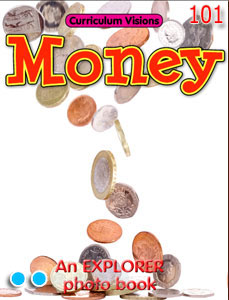Money is something we use to buy goods and pay bills. Cash is money we carry around with us and comes in two kinds: paper money (banknotes) and pieces of metal – coins. Most coins are flat discs.
In the past they were made of precious metals, such as gold and silver. Then they were worth what it said on the face. But that time is long past. Today they are made of cheap, but strong and hard, metal.
Coins are used when we need small amounts of money. Banknotes are used when we need larger amounts of money.
When a coin is made, we say it has been minted. Since ancient times, governments have made sure they control who mints coins. British coins are made, for example, in the Royal Mint.
In times long ago, people used to trade one thing for another. For example, if you wanted a suit of armour made by someone, he might do that if you gave him nine oxen in exchange. He might exchange one of his oxen for a sack of flour, and so on. This all gets very awkward and inflexible. You can’t chop an ox in half if a sack of flour costs one and a half oxen. So something had to be done about it.
The first people to decide to use something else - coins - were the ancient Greeks, Turks, Indians or Chinese (no one is quite sure which) about 700BC. But it is certain that the idea caught on quickly.
The earliest coins were made of a combination (an alloy) of silver and gold.
The first problem was how to know that you had a coin, and how much it was worth. The first coins had different animals on to tell you which the coin was. They did not put any writing on.
But then you might not know who was minting the coins, so it was not long before names of states and kings began to appear on them.
The ancient Greeks used these coins, and the Romans took coins as part of everyday life.
The trouble with coins made from gold or other precious metal was that they really were valuable in their own right. So people would shave little bits off the edges before using them again. That is why the edges were given ridges (it’s called a milled edge). Then you could see if it had been shaved. Making a coin out of cheap metal solved that problem permanently.
Coins have two sides, and it was not long before one side was used to say how much the coin was worth and the other side was used to say who had minted it (in Britain it was minted on behalf of the king or queen, so it therefore carried the king or queen’s head). The side with the head is called the obverse (meaning front). It is also known as heads if you toss a coin. The other side is the reverse, called tails when tossing a coin.





